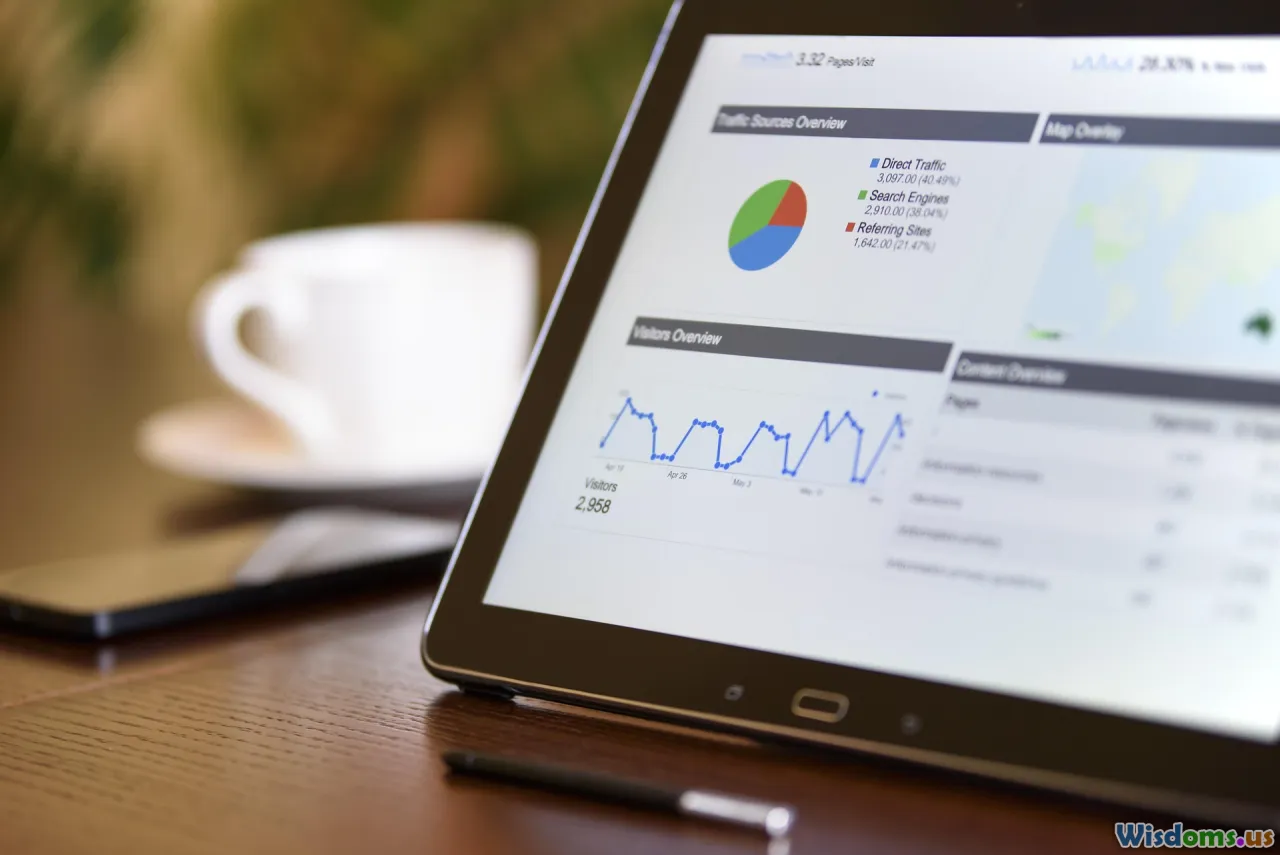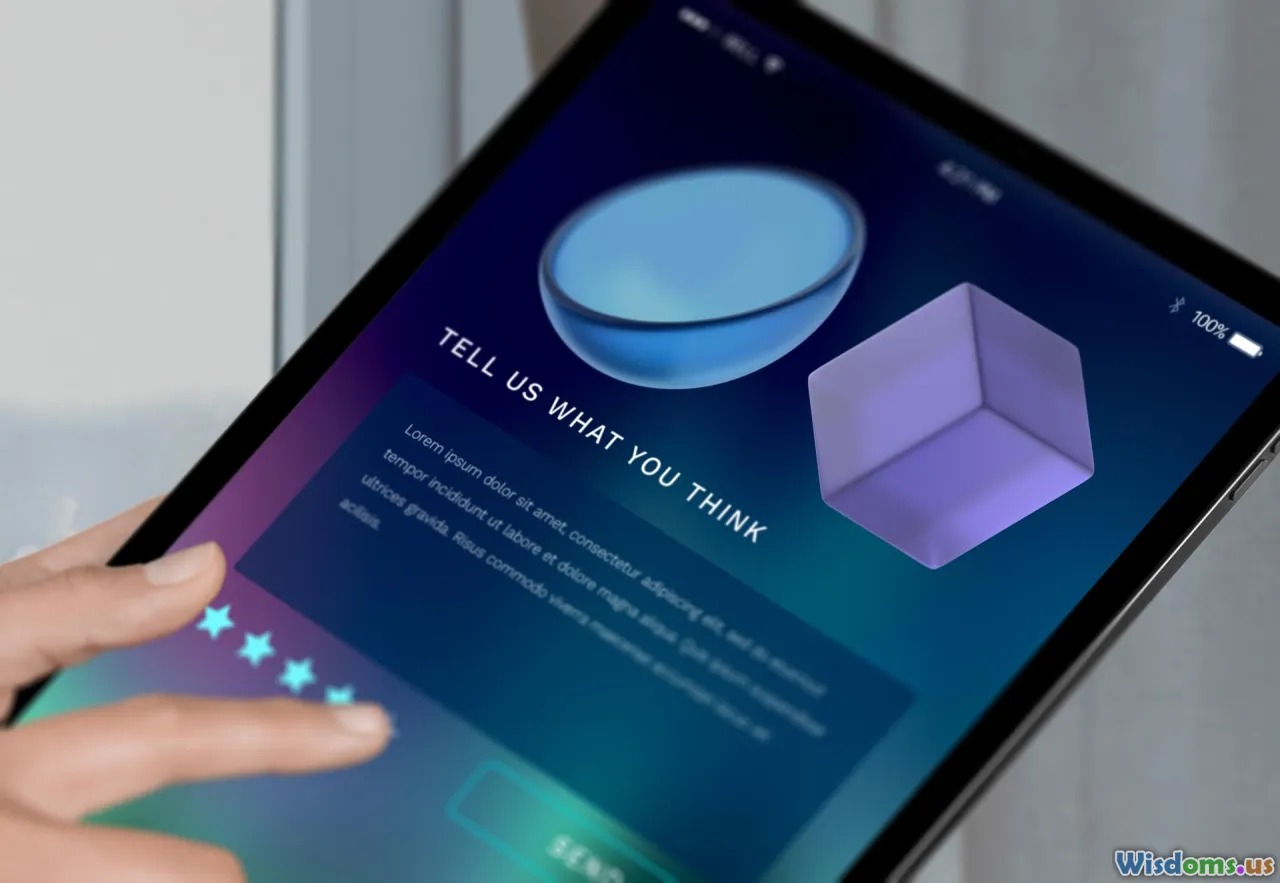
Data Driven Ways To Improve Your Persuasion Powers
15 min read Discover data-driven techniques to enhance your persuasion skills and influence outcomes effectively. (0 Reviews)
Data Driven Ways To Improve Your Persuasion Powers
The ability to persuade is more than just a talent—it's a crucial skill in business, relationships, and daily communication. While traditional advice focuses on charisma and confidence, the real edge comes from using data-backed strategies. Leveraging cognitive science, social psychology, and analytics, you can transform your persuasive abilities from guesswork into a science.
The Science Behind Persuasion: What Data Reveals

Persuasion has been studied for decades, but the recent explosion in data tools and behavioral research has reshaped our understanding of decision-making. According to Dr. Robert Cialdini, author of Influence: The Psychology of Persuasion, persuasion hinges on scientifically-proven principles such as reciprocity, commitment, and social proof.
Researchers analyze how people respond to different stimuli — not just what they say, but also how they behave. For instance, A/B testing in digital marketing regularly reveals that simply tweaking a call-to-action (CTA) or headline can lead to conversions increasing by more than 30%.1 This kind of robust measurement has replaced intuition with actionable insights.
One captivating example is a Yale study where subtle wording changes increased hospital hand-washing compliance by over 30%. By stressing the impact on patients ("Hand hygiene prevents patients from catching diseases"), instead of focusing on the hospital staff, behavior shifted. The data shows that people are more persuaded when outcomes relate to others than to themselves—a powerful lesson for any persuader.
Crafting Messages That Convert: Lessons From A/B Testing

How you frame your argument matters just as much as the facts. Digital marketers routinely use split testing to refine persuasive messages based on user response. The method is simple: create two variations of a message, show each to a segment of your audience, and let the data reveal which is most effective.
Case Study: An e-commerce site experimented with two headlines:
- "Save More Today!"
- "Unlock Exclusive Savings"
Data showed the "Exclusive" headline boosted click-through rates by 21%. Why? The word 'exclusive' taps into consumers’ need to feel special and part of a select group—a psychological lever well-established in marketing literature.
Actionable Tips:
- Experiment Rapidly: Don't assume your first draft is the winner. Use A/B tests to find the most persuasive version.
- Track Key Metrics: Focus on click-throughs, sign-ups, or direct responses. Objective metrics will guide improvements.
- Iterate and Refine: Approach messaging like a scientist—the more you measure, the better you adapt.
Social Proof and Its Data-Driven Impact

Social proof—our tendency to look to others before making decisions—magnifies persuasive power. The data is compelling: adding reviews or testimonials increases conversion by up to 270% for lower-priced products, according to Spiegel Research Center.
Real-World Example: Airbnb attributes a significant part of its initial growth to user reviews and peer validation. Even simple displays like “200 people booked this home in the last week” create urgency and instill trust.
To use social proof effectively:
- Showcase Testimonials: Use genuine client or peer statements.
- Highlight Popular Choices: Phrases like “Bestseller” guide people subtly.
- Display Trust Symbols: Badges, ratings, and user numbers back your credibility with visual data.
Social proof is measurable: marketers routinely see lift when authentic signals are front-and-center. If you want persuasion that scales, let your users do the talking.
Personalization: The Art and Science of Microtargeting

Personalized communication is the apex of data-driven persuasion. According to Salesforce, personalized emails have a 29% higher open rate and 41% higher click rates than generic campaigns. Consumers respond when messages address their needs, interests, and contexts directly.
Techniques for Personalization:
- Behavioral Data: Analyze clicks, page views, and past actions. Netflix recommendations, for example, employ behavioral data to keep you engaged with tailored content.
- Segmented Messaging: Divide your audience by age, location, or preferences. Segmentation for a wellness brand might mean sending different offers to new mothers and fitness enthusiasts.
- Dynamic Content: Use tools like HubSpot or Marketo to change website or email content in real-time, based on user profiles or behaviors.
Pro Tip: Always respect privacy and transparency. Personalization’s power falters—and can even become manipulative—if users feel surveilled or misled.
Harnessing Data From Frequently Overlooked Behavioral Signals
Every click, scroll, and pause generates valuable data. Heatmaps, which visualize where users focus their attention on a website, can reveal which sections or headlines persuade most effectively.
Case Study: E-commerce companies often discover that customers hover over price tags or shipping details far more than features lists. By repositioning trust factors—warranty information, money-back guarantees—near these hot spots, conversion rates improve dramatically.
Other underutilized signals:
- Dwell Time: How long do users pause on persuasive parts of your pitch?
- Exit Points: Where do people lose interest, and why?
- Click Flow: Which sequence of content leads to more action?
For presentations, tools like Poll Everywhere or Slido can measure where listeners are nodding along—or disengaged—using real-time digital feedback. Armed with these insights, you can fine-tune every interaction for maximum persuasive impact.
Anchoring and Framing: Data-Backed Power Tools

Anchoring is a classic cognitive bias—people rely heavily on the first piece of information they receive when making decisions. eCommerce giants like Amazon strategically display higher “list prices” next to discounted prices, making the deal seem more tempting.
Framing effects are also potent. In one MIT study, selling subscriptions with three pricing options quadrupled uptake for the middle package. Presenting prices as “only $1.29 a day” instead of “$39.99 a month” can drastically increase subscriptions, because daily expenditures seem less burdensome.
Practical Persuasion Tools:
- Always Set the Anchor: Start with a compelling (even if hypothetical) reference point.
- Frame for Gains: Emphasize what’s gained, not what’s lost ("Get an extra month free" vs. "Don’t lose your bonus month").
- Compare Wisely: Position your offering against alternatives to highlight its strengths.
These techniques owe their effectiveness to decades of behavioral economics experiments, repeatedly verified in the marketplace and the lab.
Emotional Triggers: The Measurable Role of Feelings

Emotions drive decisions—often more than rational analysis. Data from Campaign Monitor finds that marketing emails with emotional wording enjoy over 22% higher engagement. Similarly, crowdfunding campaigns that feature emotional stories reach their targets 32% faster.
Ways to Leverage Emotional Persuasion:
- Storytelling: Share case studies or narratives, not just data points. A real story about a company solving a customer’s urgent problem persuades far better than statistics alone.
- Visuals: Emotional images drive action. TransUnion reported an 84% lift in response rates with emotion-rich creative content.
- Language: Use words that evoke excitement, urgency, or empathy. Compare "improve productivity" versus "unlock your team's potential"—the second triggers a vision, not just a number.
Modern text analytics can even score the reading public’s emotional reactions in real time, letting you adjust your scripts or copy accordingly.
Timing and Frequency: Data on the Right Moments to Persuade

When you make your pitch is just as important as how. Marketing timing studies show predictable patterns: B2B email open rates peak on Tuesdays, while consumer promo emails perform better on weekends.
Using data-driven scheduling extends beyond email:
- Audience Activity Data: Social platforms like LinkedIn offer analytics showing when your audience is active. Present proposals or share content in those prime windows for more persuasive force.
- Behavior Triggers: SaaS companies like Slack use behavioral triggers ("Haven't logged in lately?") to nudge users at moments when they're primed for reengagement.
- Underdog Advantage: Research from Harvard shows that pitching new ideas to individuals just before lunchtime, when serotonin dips, can lead to an over 10% higher agreement rate—a quirky but robust finding!
Rather than guessing, map your persuasion efforts against user data to connect at precisely the right moment.
Visual Data: Infographics, Charts, and Persuasive Storytelling

Visuals are powerful silent persuaders. According to the Nielsen Norman Group, people recall information 6.5 times better when paired with relevant images. Infographics and data charts distil complex arguments into digestible, compelling visuals.
How to Leverage Visual Persuasion:
- Data Visualization: Use color-coded graphs or charts for clarity—especially when explaining results, comparisons, or trends.
- Infographics: Summarize multi-step processes or compelling evidence; infographics increase web traffic by up to 12%, per industry benchmarks.
- Interactive Tools: Platforms like Tableau or Flourish allow for clickable, live data that adapts to user exploration. This hands-on approach takes a passive audience and turns them into participants in their own persuasion journey.
Don’t just tell—show. Combining verbal and visual data locks in your argument, aided by how the human brain is hardwired for multisensory input.
Feedback Loops: Using Data to Improve Every Interaction

True persuasion professionals don’t rely solely on their own impressions—they measure, learn, and adapt. Building a continual feedback loop transforms every persuasive attempt into iterative improvement.
Real-Time Measurement Tactics:
- Post-Meeting Surveys: Ask for quick ratings on clarity and persuasiveness after presentations.
- Analytics Tools: Use platforms like Google Analytics or HubSpot to track engagement and drop-off.
- One-on-One Debriefs: When persuading in person, ask for feedback about your message (“Was this clear? Did this address your needs?”)
Incorporating feedback into your process, you pinpoint areas for growth—and as the data reveals, even minor adjustments compound over time.
Today, persuasion isn't just an art—it's an applied science, thanks to the wealth of behavioral and analytic data at our fingertips. By studying what works, testing new techniques, and refining every pitch, anyone can level up their influence. Whether you're presenting at work, making your case with a client, or negotiating at home, data-driven insights empower you to be not only more convincing but more authentic and impactful. Harness the evidence, experiment, and become a master of meaningful persuasion.
Rate the Post
User Reviews
Popular Posts


















